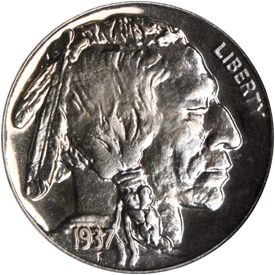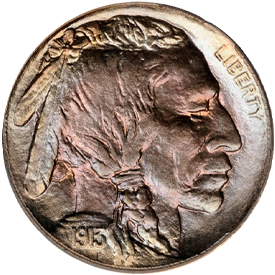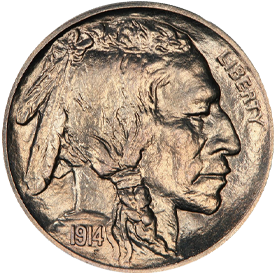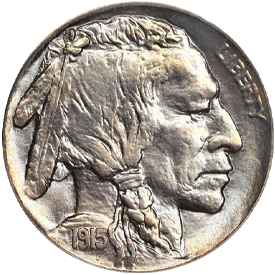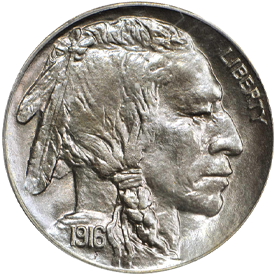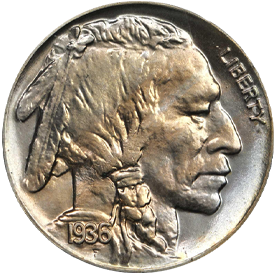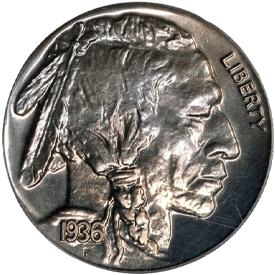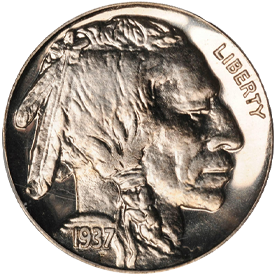Designed by: James E. Fraser
Issue Dates: 1913-1916, 1936-1937
Composition: 75% copper, 25% nickel
Diameter: 21.2 mm
Weight: 5.00 grams (77.16 grains)
Edge: Plain
Proof Mintage: 4,439 Matte Proofs; 10,189 Proofs with brilliant finish
Proof Buffalo nickels were made in two groups – occurring at the beginning and then at the end of the series.
From 1913 to 1916, Matte Proof coins were made at the Philadelphia Mint. Like the Matte Proof Lincoln cents, these were unpopular with collectors, most of whom preferred the earlier "brilliant" or mirrorlike surfaces. As a result, quantities struck declined over the next three years, falling to a low of only 600 pieces by 1916. Both types of the 1913 were struck in Proof, in approximately equal numbers – just over 1,500 of each. Like the Matte Lincoln cents, collectors have since grown to appreciate both the beauty and rarity of these issues, and the very top-graded examples of these bring extremely high prices today.
Proofs were again coined in 1936 and 1937, and these were of the brilliant finish with polished fields. However, some of those produced early in 1936 are only partially polished and appear to be hybrid between a business strike and a Proof. These are called “Satin Proofs.” Later in 1936 (and in 1937) the fully brilliant finish was employed. This brilliant finish appears to be more popular with collectors today. Mintage ranged from 4,420 in 1936 to 5,769 in 1937.

